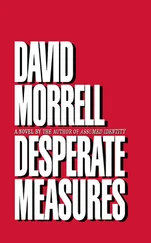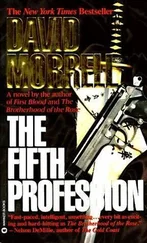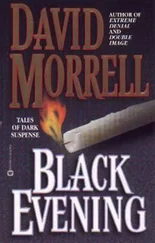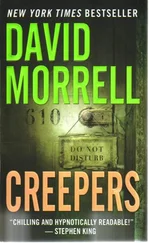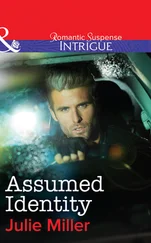David Morrell - Assumed Identity
Здесь есть возможность читать онлайн «David Morrell - Assumed Identity» весь текст электронной книги совершенно бесплатно (целиком полную версию без сокращений). В некоторых случаях можно слушать аудио, скачать через торрент в формате fb2 и присутствует краткое содержание. Жанр: Триллер, на английском языке. Описание произведения, (предисловие) а так же отзывы посетителей доступны на портале библиотеки ЛибКат.
- Название:Assumed Identity
- Автор:
- Жанр:
- Год:неизвестен
- ISBN:нет данных
- Рейтинг книги:4 / 5. Голосов: 1
-
Избранное:Добавить в избранное
- Отзывы:
-
Ваша оценка:
- 80
- 1
- 2
- 3
- 4
- 5
Assumed Identity: краткое содержание, описание и аннотация
Предлагаем к чтению аннотацию, описание, краткое содержание или предисловие (зависит от того, что написал сам автор книги «Assumed Identity»). Если вы не нашли необходимую информацию о книге — напишите в комментариях, мы постараемся отыскать её.
Assumed Identity — читать онлайн бесплатно полную книгу (весь текст) целиком
Ниже представлен текст книги, разбитый по страницам. Система сохранения места последней прочитанной страницы, позволяет с удобством читать онлайн бесплатно книгу «Assumed Identity», без необходимости каждый раз заново искать на чём Вы остановились. Поставьте закладку, и сможете в любой момент перейти на страницу, на которой закончили чтение.
Интервал:
Закладка:
David R. Morrell
Assumed Identity
No mask like open truth to cover lies,
As to go naked is the best disguise.
— William Congreve, The Double DealerAnd, after all, what is a lie?
’Tis but the truth in masquerade. .
— Lord Byron, Don JuanPROLOGUE
MEXICO, 1562
Less than forty years after the Spanish conquerers arrived in the New World, the systematic extermination of the natives was well under way. Much of the genocide required no effort, inasmuch as diseases to which the Europeans had become accustomed-smallpox, measles, mumps, and influenza, for example-did not exist in the New World and hence had a rapid effect on the natives, who had no immunity to them. Those who did not die from disease (perhaps as few as 10 percent of the original population survived) were beaten into submission and forced into slavery. Villages were destroyed, the inhabitants herded into labor camps. Every effort, especially torture, was used to compel the survivors to abandon their culture and convert to that of their European dominators.
In Mexico’s southeastern extreme, the Yucatan Peninsula, a Franciscan missionary whose name was Diego de Landa reacted with shock to the evidence of snake worship and human sacrifice within the Mayan faith. Determined to eradicate these pagan barbarities, Landa organized the destruction of temples, statues, frescoes, any object with religious connotations-and in so doing, he not only separated the Maya from symbols of their beliefs but prevented modern historians from discovering the clues they needed to decipher the remaining hieroglyphs that described the lost ancient ways.
Landa’s greatest triumph of destruction occurred at the village of Mani, where he exposed a secret library of Mayan books. These irreplaceable texts-bound like thin, small accordions and known as codices-“contained nothing in which there was not to be seen superstitions and lies of the devil,” Landa reported to his superiors. “We burned them all.”
We burned them all.
A present-day lover of antiquity exhales with despair at the self-righteous, narrow-minded confidence in those words. Book burners throughout time have shared Landa’s purse-lipped, squinty-eyed, jut-jawed, absolute belief in his correctness. But Landa was deceived.
In several ways.
The codices contained historical and philosophical truths in addition to what Landa called lies.
And not all the codices were destroyed. Three of them-salvaged by Spaniards in charge of the burning and smuggled home to Europe as souvenirs-were eventually uncovered in private collections and recognized for their incalculable value.
Known as the Dresden Codex, the Codex Tro-Cortesianus, and the Codex Persianus, they are owned by libraries in Dresden, Madrid, and Paris. A fourth-known as the Grolier Codex and located in Mexico City-has been declared by one expert a fake and is currently under investigation.
But rumors persist that there is a fifth, that it is authentic, that it has more truths than any other, especially one truth, a crucial truth.
A modern observer wonders how Friar de Landa would react if he could be summoned from Hell and made to witness the bloodbath comparable in intensity, if not in magnitude, to the one Landa caused in the 1500s, the bloodbath that could have been avoided if Landa had never begun his inquisition or else if he had been the professional he claimed to be and had actually accomplished his hateful job. Mani, the name of the village where Landa found and destroyed the codices, is the Mayan word for “it is finished.”
But it wasn’t finished at all.
ONE
1
“Now I realize you all want to hear about human sacrifice,” the professor said, allowing just the right mischievous glint in his eyes, signaling to his students that to study history didn’t mean they had to suppress their sense of humor. Each time he taught this course-and he’d been doing so for thirty years-he always began with the same comment, and he always got the reaction he wanted, a collective chuckle, the students glancing at one another in approval and sitting more comfortably.
“Virgins having their hearts cut out,” the professor continued, “or being thrown off cliffs into wells-that sort of thing.” He gestured dismissively, as if he was so familiar with the details of human sacrifice that the subject bored him. Again his eyes glinted mischievously, and the students chuckled louder. His name was Stephen Mill. He was fifty-eight, short and slender, with receding gray hair, a thin salt-and-pepper mustache, square-framed, wire-rimmed bifocals, and a brown wool suit that gave off the scent of pipe smoke. Liked and respected by both colleagues and students, he was beginning the last seventy minutes of his life, and if it was any consolation, at least he would die doing what he most enjoyed, talking about his life’s obsession.
“Actually, the Maya didn’t have much interest in sacrificing virgins,” Professor Mill added. “Most of the skeletons we’ve retrieved from the sacred wells-they’re called cenotes, by the way; you might as well begin learning the proper terms-belong to males, and most of those had been children.”
The students made faces of disgust.
“The Maya did cut out hearts, of course,” Professor Mill said. “But that’s the most boring part of the ritual.”
Several students frowned and mouthed “boring?” to one another.
“What the Maya would do is capture an enemy, strip him, paint him blue, take him to the top of a pyramid, break his back but not kill him-not yet at least; the temporary objective was to paralyze him-then cut out his heart, and now he’d die, but not before the high priest was able to raise the victim’s pulsing heart for everyone to see. The heart and the blood dripping from it were smeared onto the faces of gods carved into the walls at the top of the temple. It’s been theorized that the high priest may also have consumed the heart. But this much we know for certain: The victim’s corpse was subsequently hurled down the steps of the pyramid. There a priest cut off the victim’s skin and danced in it. Those who’d witnessed the ceremony chopped the corpse into pieces and barbecued it.”
The students swallowed uncomfortably, as if they felt sick.
“But we’ll get to the dull stuff later in the term,” Professor Mill said, and the students laughed again, this time with relief. “As you know, this is a multidiscipline course.” He switched tones with expert ease, deepening his voice, abandoning his guise as an entertainer, becoming a lecturer. “Some of you are here from art history. Others are ethnologists and archaeologists. Our purpose is to examine Mayan hieroglyphics, to learn to read them, and to use the knowledge we obtain to reconstruct Mayan culture. Please turn to page seventy-nine of Charles Gallenkamp’s Maya: The Riddle and Rediscovery of a Lost Civilization. ”
The students obeyed and immediately frowned at a bewildering diagram that looked like a totem pole with two descending columns of distorted, grimacing faces flanked by lines, dots, and squiggles. Someone groaned.
“Yes, I realize the challenge is daunting,” Professor Mill said. “You’re telling yourselves that you can’t possibly learn to read that maze of apparently meaningless symbols. But I assure you, you will be able to read it and many others like it. You’ll be able to put sounds to those glyphs, to read them as if they were sentences.” He paused for dramatic effect, then straightened. “To speak the ancient Mayan language.” He shook his head with wonder. “You understand now what I meant. Stories about human sacrifice are dull. This”-he pointed toward the hieroglyphs in Gallenkamp’s book-“this is the true excitement.” He directed a keen gaze toward each of his twenty students. “And since we have to start somewhere, let’s start as we did when we were children, by making lines and dots. You’ll note that many of the columns of glyphs-which depict a date, by the way-look like this.” Grabbing a piece of chalk, Professor Mill drew hurried marks on the blackboard.
Читать дальшеИнтервал:
Закладка:
Похожие книги на «Assumed Identity»
Представляем Вашему вниманию похожие книги на «Assumed Identity» списком для выбора. Мы отобрали схожую по названию и смыслу литературу в надежде предоставить читателям больше вариантов отыскать новые, интересные, ещё непрочитанные произведения.
Обсуждение, отзывы о книге «Assumed Identity» и просто собственные мнения читателей. Оставьте ваши комментарии, напишите, что Вы думаете о произведении, его смысле или главных героях. Укажите что конкретно понравилось, а что нет, и почему Вы так считаете.

